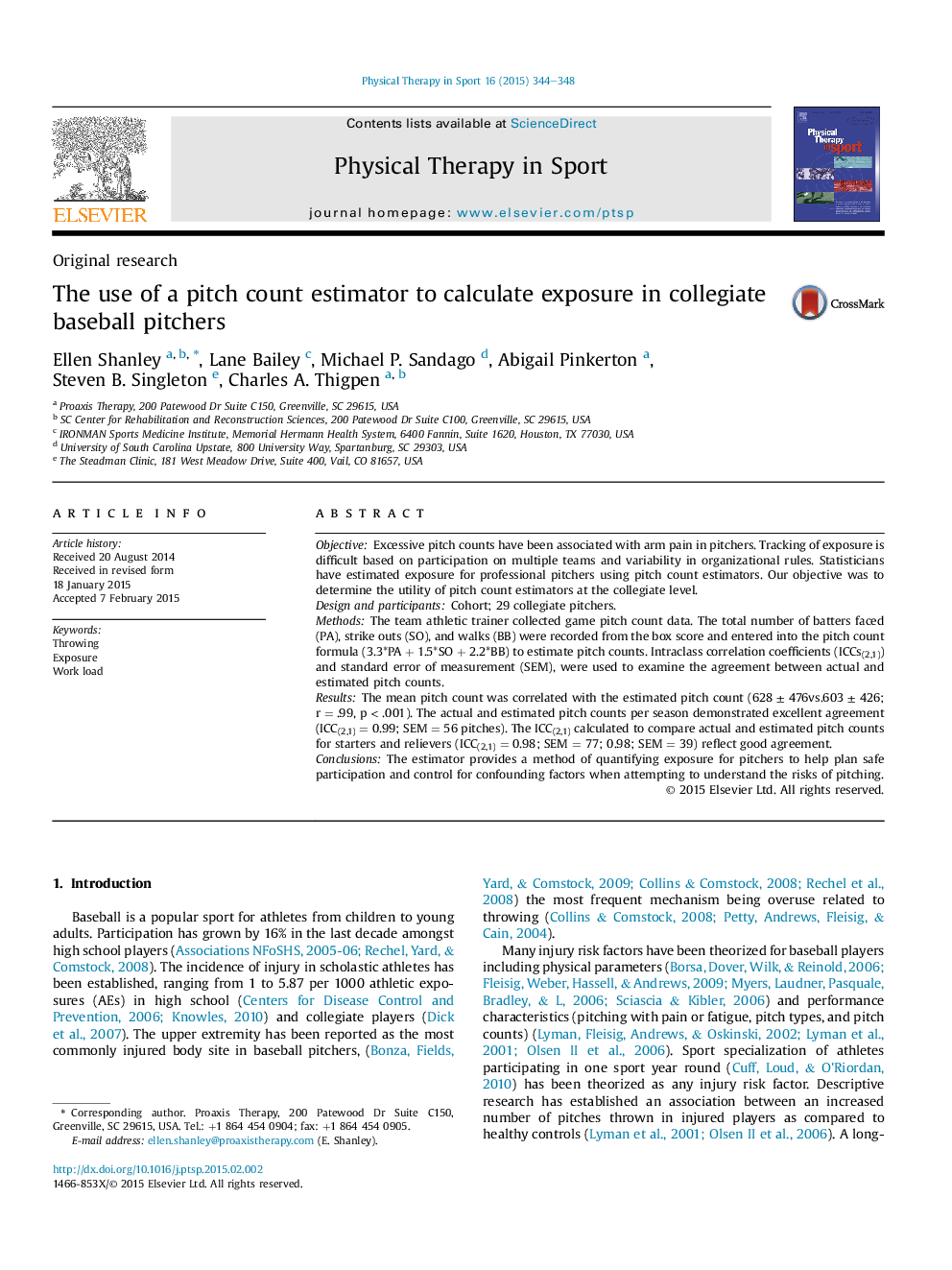| Article ID | Journal | Published Year | Pages | File Type |
|---|---|---|---|---|
| 2705755 | Physical Therapy in Sport | 2015 | 5 Pages |
•Pitch counts can reliably be quantified using an estimator equation.•Seasonal counts appear more accurate than individual outing exposure.•Starters threw more innings per game and pitches per season than relievers.•The estimator's reliability was good regardless of position (starter vs. reliever).
ObjectiveExcessive pitch counts have been associated with arm pain in pitchers. Tracking of exposure is difficult based on participation on multiple teams and variability in organizational rules. Statisticians have estimated exposure for professional pitchers using pitch count estimators. Our objective was to determine the utility of pitch count estimators at the collegiate level.Design and participantsCohort; 29 collegiate pitchers.MethodsThe team athletic trainer collected game pitch count data. The total number of batters faced (PA), strike outs (SO), and walks (BB) were recorded from the box score and entered into the pitch count formula (3.3*PA + 1.5*SO + 2.2*BB) to estimate pitch counts. Intraclass correlation coefficients (ICCs(2,1)) and standard error of measurement (SEM), were used to examine the agreement between actual and estimated pitch counts.ResultsThe mean pitch count was correlated with the estimated pitch count (628 ± 476vs.603 ± 426; r = .99, p < .001). The actual and estimated pitch counts per season demonstrated excellent agreement (ICC(2,1) = 0.99; SEM = 56 pitches). The ICC(2,1) calculated to compare actual and estimated pitch counts for starters and relievers (ICC(2,1) = 0.98; SEM = 77; 0.98; SEM = 39) reflect good agreement.ConclusionsThe estimator provides a method of quantifying exposure for pitchers to help plan safe participation and control for confounding factors when attempting to understand the risks of pitching.
